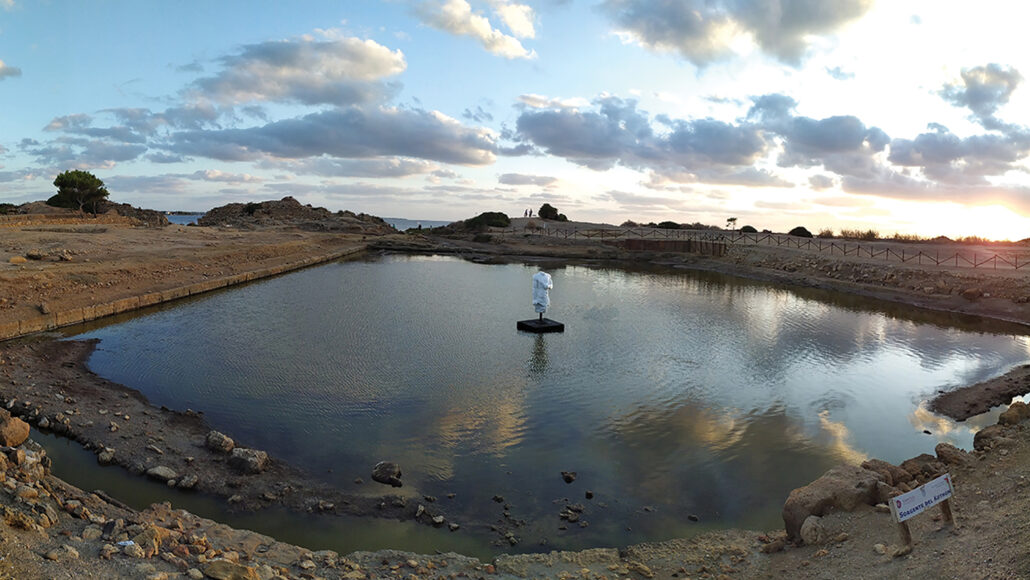Ancient seafarers built the Mediterranean's largest known sacred pool
A big pool on a tiny island helped Phoenicians track the stars and their gods

Shown after excavations, a sacred pool built by Phoenicians around 2,550 years ago on a tiny Mediterranean island includes a replica of a statue of the god Ba’al at its center.
SAPIENZA UNIVERSITY OF ROME EXPEDITION TO MOTYA
By Bruce Bower
4 HOURS AGO
On a tiny island off Sicily’s west coast, a huge pool long ago displayed the star-studded reflections of the gods.
Scientists have long thought that an ancient rectangular basin, on the island of Motya, served as an artificial inner harbor, or perhaps a dry dock, for Phoenician mariners roughly 2,550 years ago. Instead, the water-filled structure is the largest known sacred pool from the ancient Mediterranean world, says archaeologist Lorenzo Nigro of Sapienza University of Rome.
Phoenicians, who adopted cultural influences from many Mediterranean societies on their sea travels, put the pool at the center of a religious compound in a port city also dubbed Motya, Nigro reports in the April Antiquity.
The pool and three nearby temples were aligned with the positions of specific stars and constellations on key days of the year, such as the summer and winter solstices, Nigro found. Each of those celestial bodies was associated with a particular Phoenician god.
More:
https://www.sciencenews.org/article/sacred-pool-ancient-seafarers-phoenicians-largest-mediterranean
